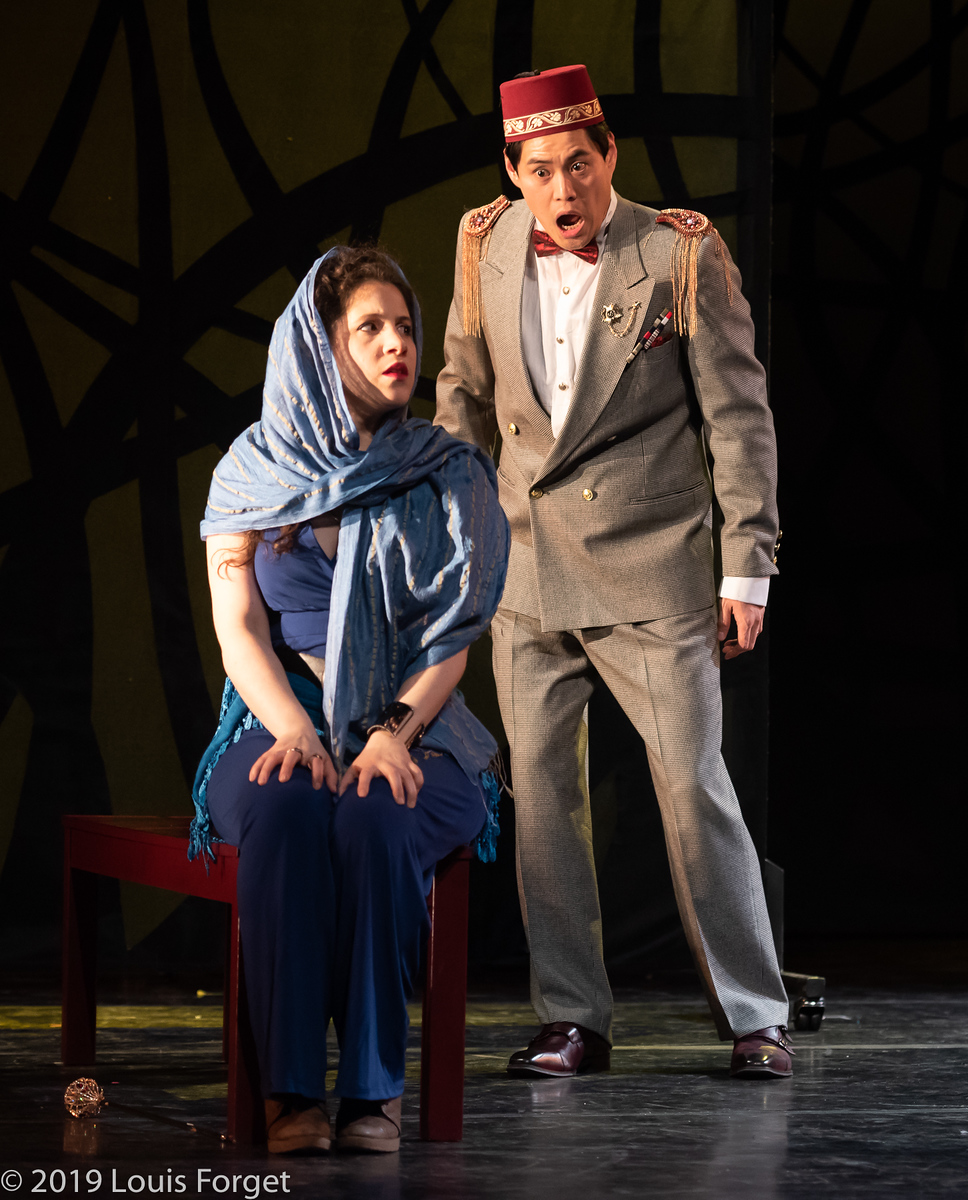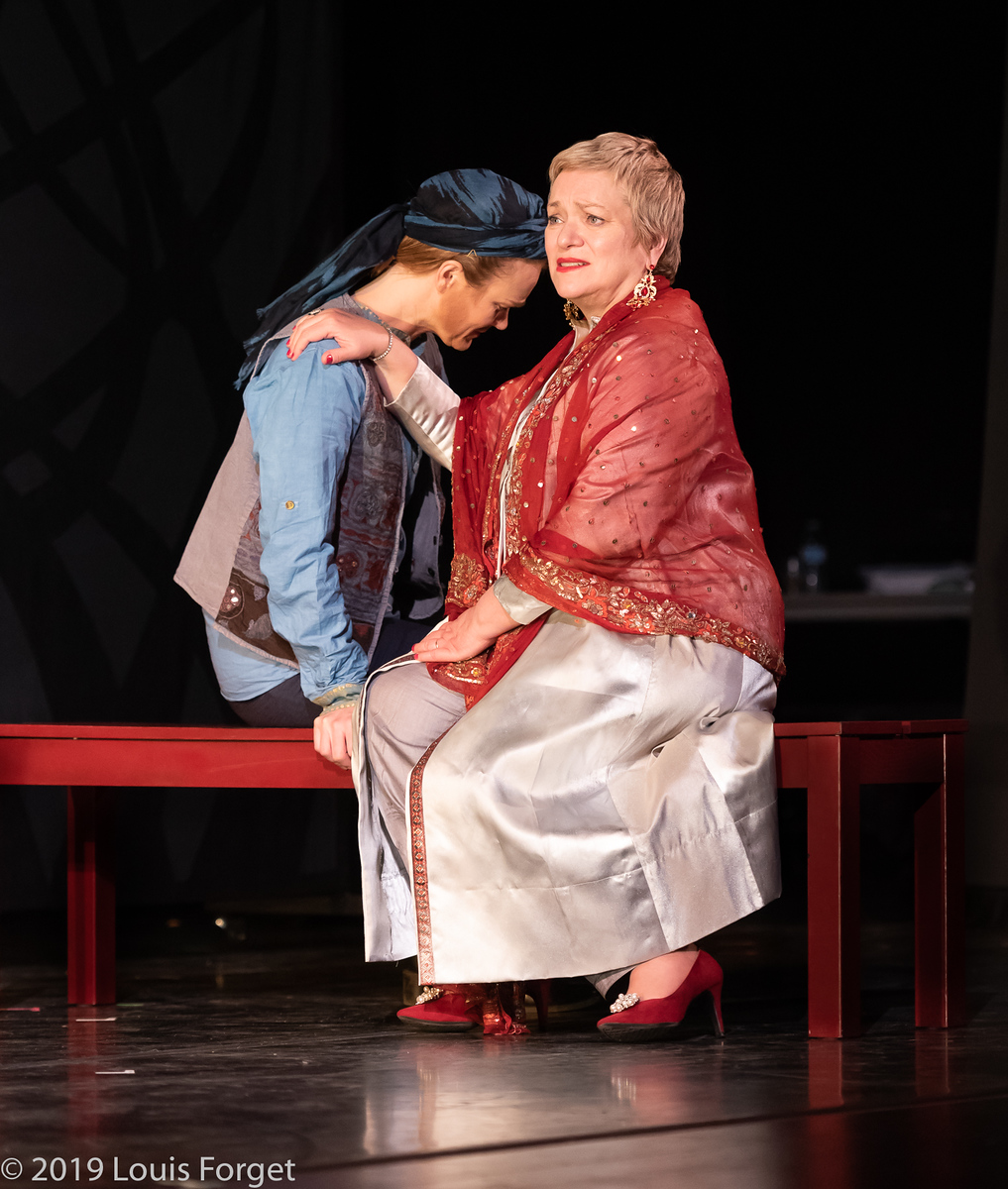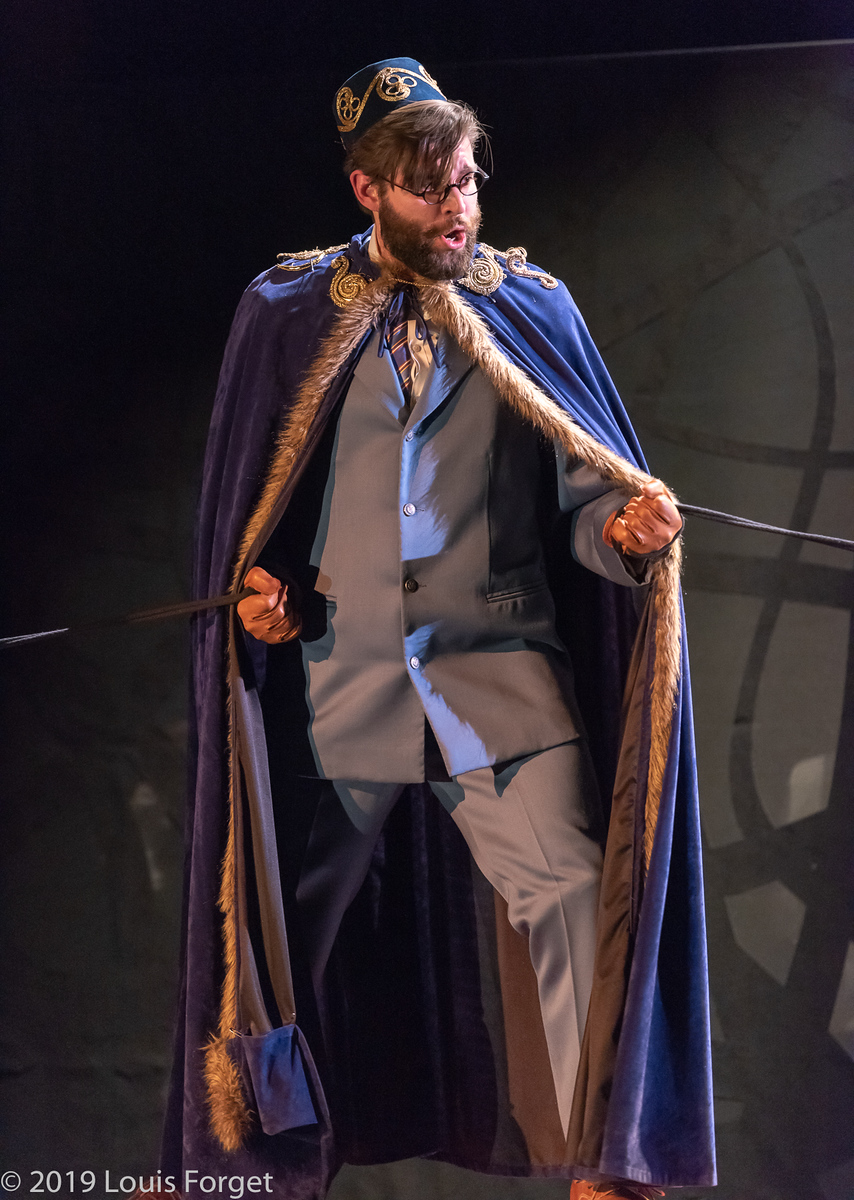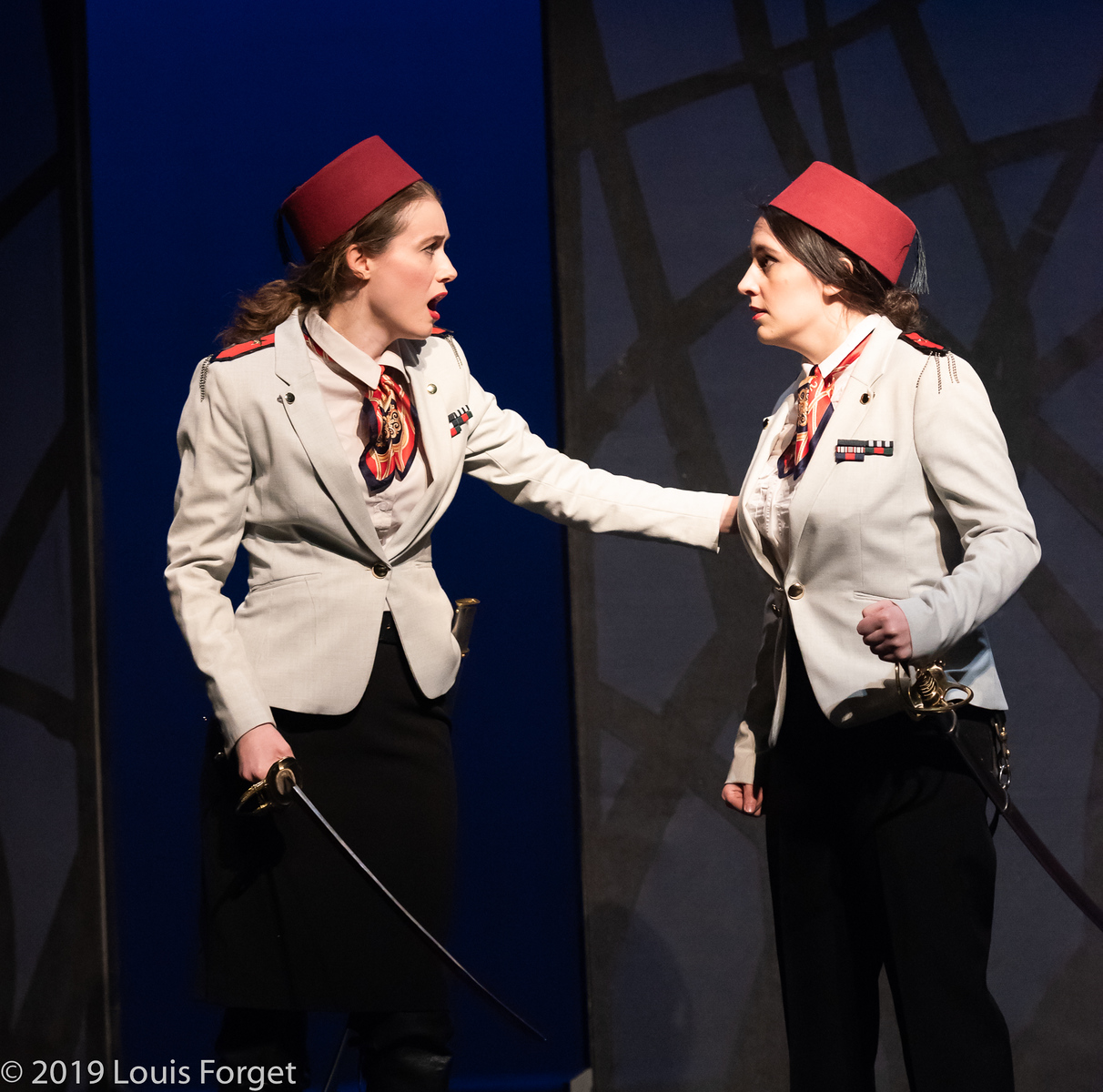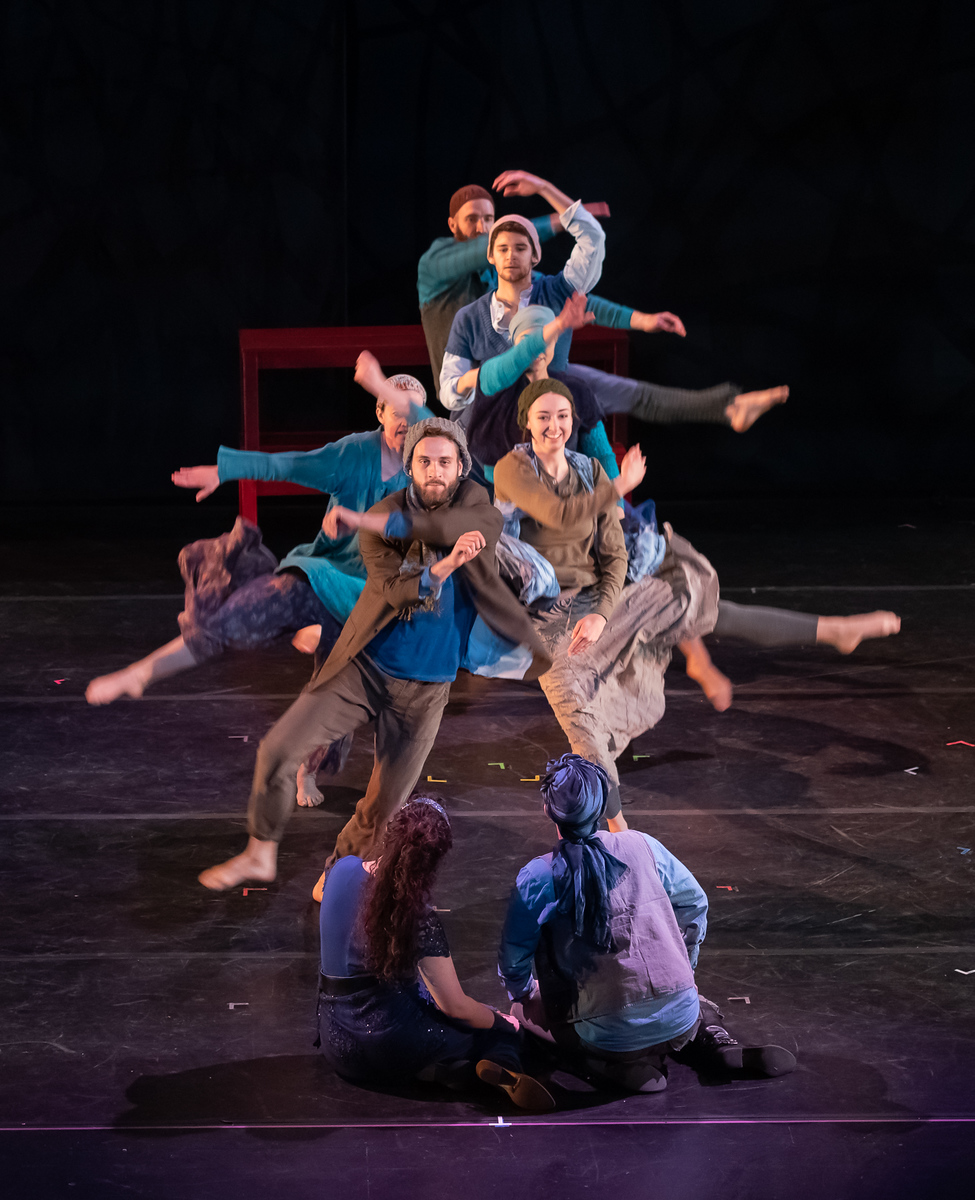Handel (centre) and King George I on the River Thames, 17 July 1717, by Edouard Hamman (1819–88); image in public domain, copied from Wikipedia.
The thought that hit me coming out of Opera Lafayette’s performance of Radamisto was Cosi fan tutte it’s not. Vows mean something in Radamisto, at least if you are a woman. Dorabella and Fiordiligi may struggle with sexual ambivalence in Cosi, but Zenobia and Polissena do not. They are faithful and strong, and you mess with them at your own peril. Radamisto is an Italian opera by composer George Frederic Handel and librettist Nicola Francesco Haym. It premiered in 1720 in the King’s Theater in London as Handel’s first opera produced by the Royal Academy of Music. The opera received a dedication from Handel to King George I of England who had just reconciled with his son, the Prince of Wales. Radamisto, ostensibly, has a theme of strife and reconciliation in a royal family, but like other operas by Handel, the story is mainly a vehicle for excellent singers to display their wares singing Handel’s beautiful arias.
Nicolas Poussin – Queen Zenobia Found on the Banks of the Araxes; image in public domain, copied from Wikipedia.
The plot engages one quickly, builds on the conflicts, but then ends with an unlikely redemption of a tyrant, an ending used by Handel to wrap things up while avoiding the bloodshed that most later composers more committed to the story would have indulged in. The characters represent historical figures though their personalities and actions are altered. King Tiridate of Armenia is the bad guy, a tyrant possessed. He has become infatuated with Zenobia, who is married to Prince Radamisto of Thrace. It’s even more complicated – Tiridate has a wife, Polissena, who also happens to be the sister of Radamisto. To make Zenobia his conquest, he invades Thrace, eventually capturing Zenobia, Radamisto, and Radamisto’s father, King Farasmane. In his single-minded pursuit of Zenobia, Tiridate threatens and alienates all around him for most of the opera, including a early, painful pushing away of the faithful Polissena. Near the end a revolt forces Tiridate to see the error of his ways. His supporters, who subsequently form the opposition, are Faarte, the King’s sibling, who is also in love with Zenobia, and Tigrane, a general of Tiridate, who is in love with Polissena. These latter two are eventually instrumental in the revolt against Tiridate, but get nowhere with the objects of their affections. The story is packed with emotion for all the characters, but what stood out to me was the strong-willed character of Zenobia and Polissena. Zenobia begs Radamisto to kill her rather than let her be taken by Tiridate, then calls him a coward because he failed to do so and attempts suicide by leaping into the Araxes River. Polissena stands by her husband, even after he rejects her to pursue Zenobia, but eventually unleashes her fury when he threatens the killing of her family members. One character after another sings beautiful arias expressing their feelings. For the ending, Tiridate’s sudden change of heart is smartly downplayed by Opera Lafayette, making his fate unclear and keeping the focus on Radamisto’s and Zenobia’s triumphal reunion.
left: Caitlin Hulcup as Radamisto. right: Hagar Sharvit as Zenobia and Robin Yuloong Kim as Tiridate. Photos by Louis Forget; courtesy of Opera Lafayette.
The music is wonderful. The twenty-seven piece Opera Lafayette orchestra, playing on period instruments and led by Conductor, OL Founder, and Artistic Director Ryan Brown, delivers an authentic baroque experience. Several arias were selectively deleted to keep the time, including two intermissions, under three hours, which may alarm purists, but seemed prudent to me. In his pre-opera talk along with Director and Choreographer Seán Curran, Mr. Brown expressed the opinion that music of the eighteenth century had a natural connection to movement and dance, which was one reason why he was drawn to music of that era. Radamisto closes each act with a short dance number. Mr. Curran with six dancers from his company arranged the dances to be a blend of period and modern dance. I found that focusing on the dances, meant to be part of the story, provided spiritual renewal, with release from the preceding tension-causing arias. In fact, I found myself wondering if performing this work in concert with even more dances included to suggest, rather than portray, the action might be a more effective way to present this opera. The costumes by Amanda Shafran suggested a later, but unspecified era in Armenia, and aided drawing us into the drama.
left: Caitlin Hulcup as Radamisto and Dominique Labelle as Polissena. right: Alex Rosen as Farasmane. Photos by Louis Forget; courtesy of Opera Lafayette.
Each cast member was pleasing and distinctive in singing their arias. The cast overall offered a gender mashup as Handel’s operas do, which in this case worked. Playing the role of Radamisto was mezzo-soprano Caitlin Hulcup who managed to appear masculine enough. I was especially touched by the beauty of her voice and the emotion it carried in an early act II aria bemoaning Zenobia’s apparent suicide. Zenobia was portrayed by Hagar Sharvit who possesses a deeper mezzo-soprano sound that I relished all evening. Polissena was sung by soprano Dominique Labelle, whose voice is lovely and carries a natural warmth. Only the two kings were sung by men. Tenor Robin Yujoong Kim was a menacing Tiridate with a satisfying tenor voice. Bass Alex Rosen demonstrated a powerful voice and presence in portraying the captured Farasmane, that promises greater things ahead for him. Tigrane was originally played by a soprano in a pants role and Faarte was a male role played by a castrato. Opera Lafayette dressed these characters in uniforms but allowed them to be female. Soprano Véronique Filloux as Tigrane and soprano Nola Richardson as Faarte were both delights, offering both charm and beautiful voices. The acting overall might have benefited from another rehearsal or two but grew more natural as the evening progressed. This was a solid cast all around.
left: Nola Richardson portraying Faarte and Véronique Filloux portraying Tigrane. right: Dancers of the Seán Curran Dance Company perform with Zenobia and Radamisto onlooking. Photos by Louis Forget; courtesy of Opera Lafayette.
Back to not being a purist for a moment: It is, of course, a pleasure to be able to hear the beauty of a Handel opera performed essentially in it’s original form, but clearly the drama in Radamisto doesn’t work as well for modern audiences; I found that it affected me, but did not grip me. I sometimes try to imagine what it was like to sit in an opera theater in the 1700s. My senses would have not been dulled by thousands of hours of being bombarded by amplified music of many genres on radio, television, and in movies, played too loudly, and I would have been more closely connected to royal families and their dramas and the customs/mores of that era. Several times during Tuesday night’s performance, the audience quietly laughed at lines and scenes that I suspect caused audiences long ago to gasp and hold their breath. To those who want to see Handel operas in their original form, keep in mind that they were not created for us because we are not an audience with tastes and sensitivities molded by the 18th century. What was it like to hear a Handel opera when it was the new thing, nothing like had been done before. Radamisto was a hit in its day, perhaps the Hamilton of its time, but it doesn’t quite rise to that level today because the audiences have changed, not the opera. Some adaptations to make the presentation more appealing to modern audiences are welcomed by me. That we can still greatly enjoy the music and connect with the emotions being conveyed are a testament to Radamisto’s greatness, the singers’ talents, and Opera Lafayette’s wisdom in presenting it, using their own good judgment.
Photo of cast and dancers with Conductor Ryan Brown (front row, second from left), who is also Opera Lfayette’s Founder and Artistic Director, and Director and Choreographer Seán Curran (end of front row on right).
The Fan Experience: Since Opera Lafayette moved their performances to the Kennedy Center’s Terrace Theater, tickets have become increasing more difficult to come by. Radamisto was sold out weeks in advance. Their next offering will be Alessandro Stradella’s La Susanna to be held in DC on April 21 and 22 with additional performances in NYC May 2-5. The additional performances should help with securing tickets, but I still recommend making your ticket purchases early.




